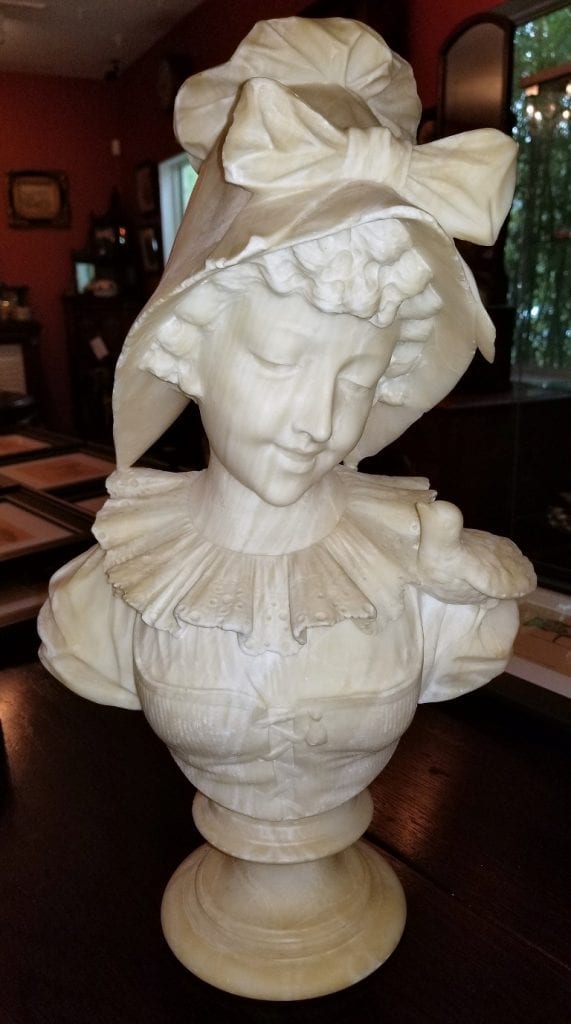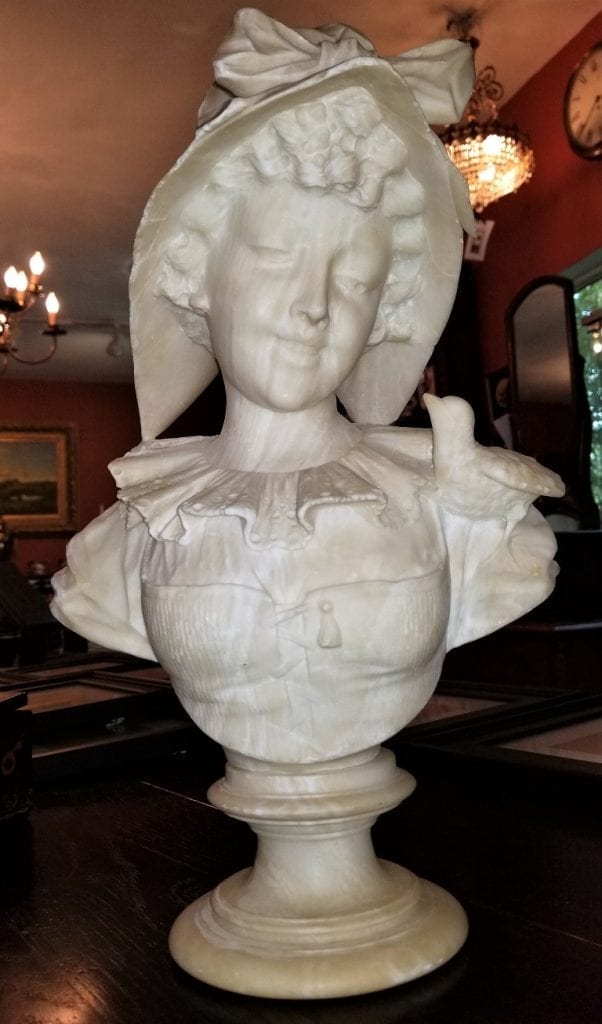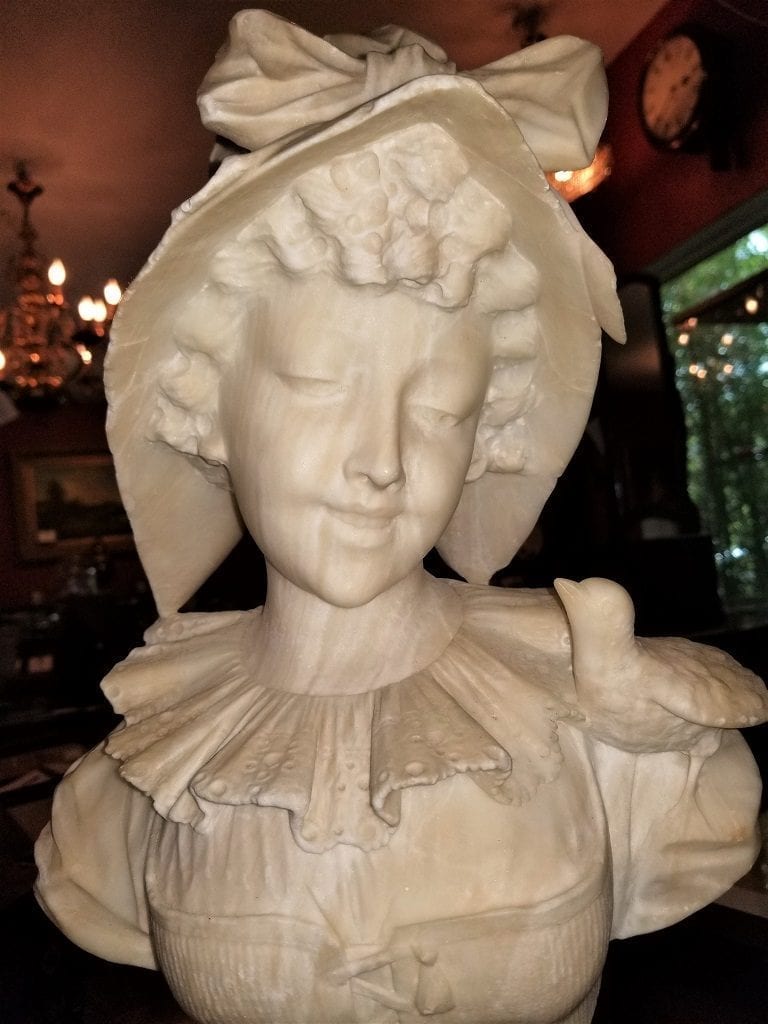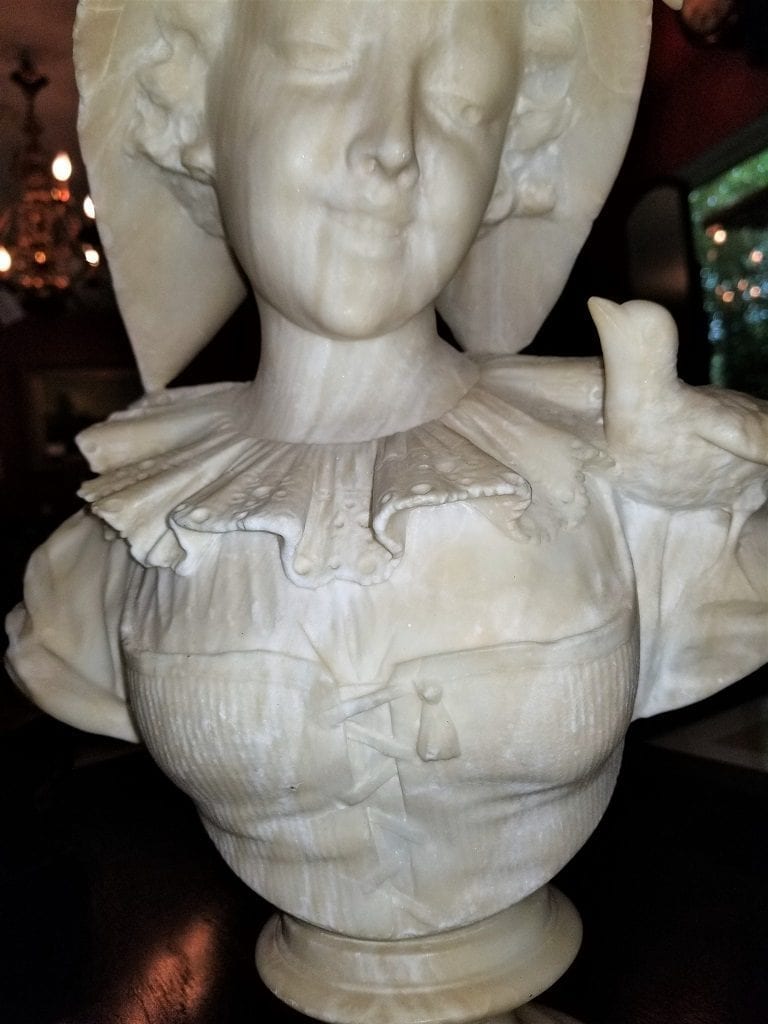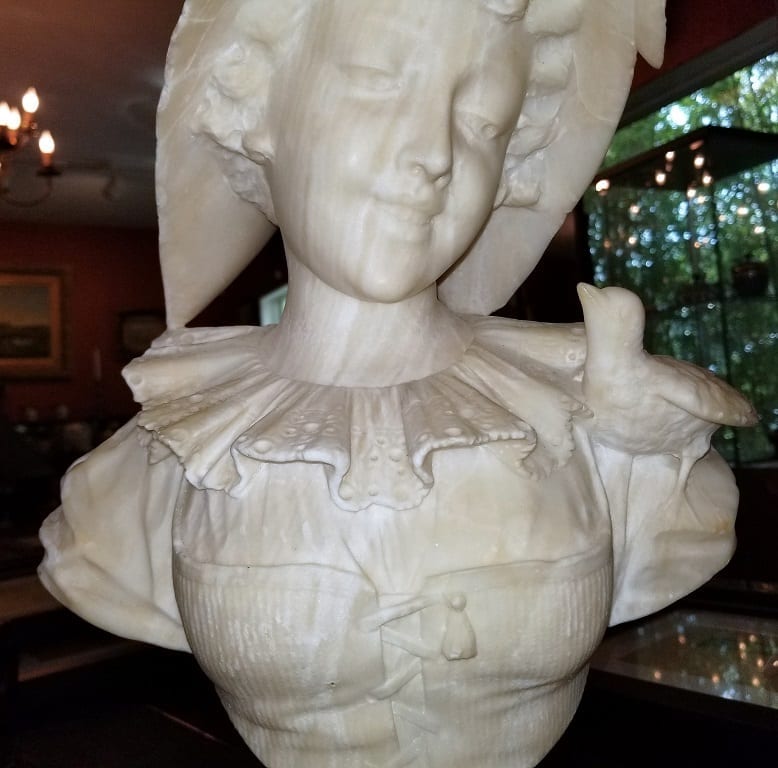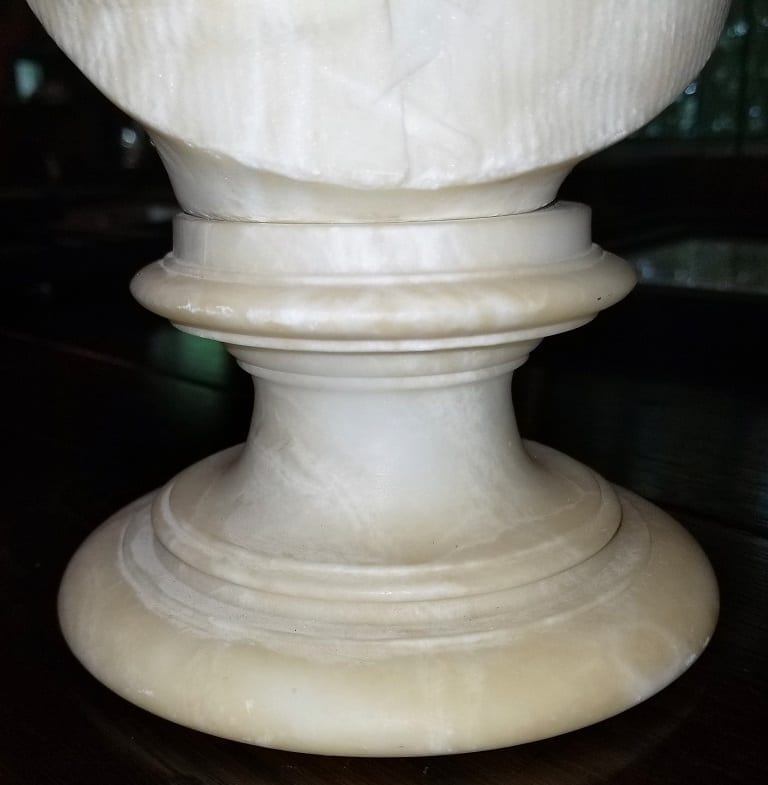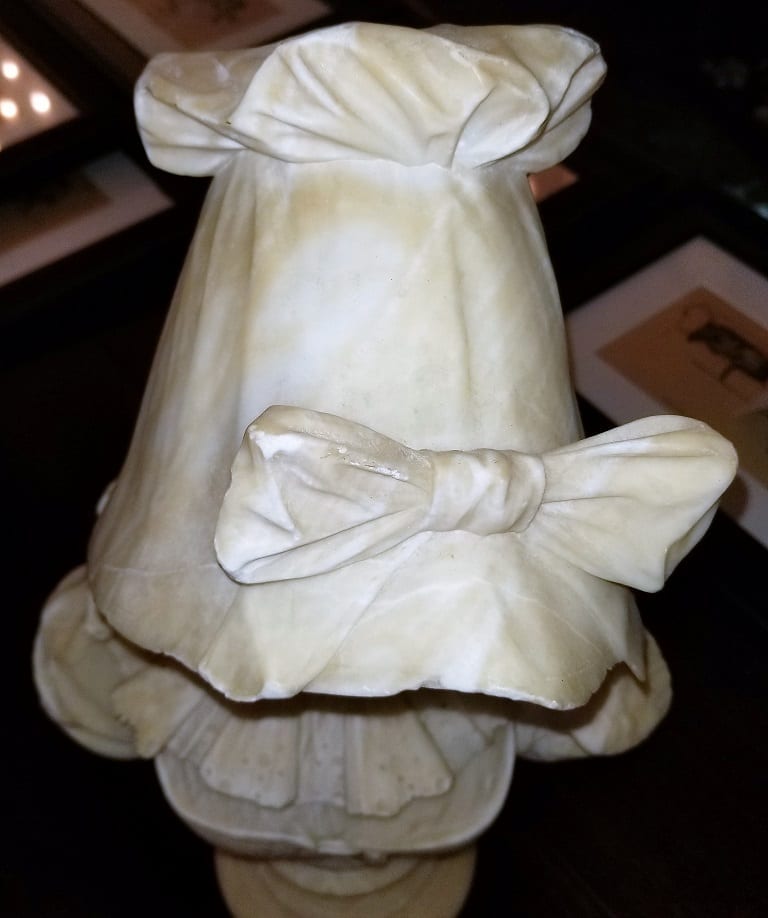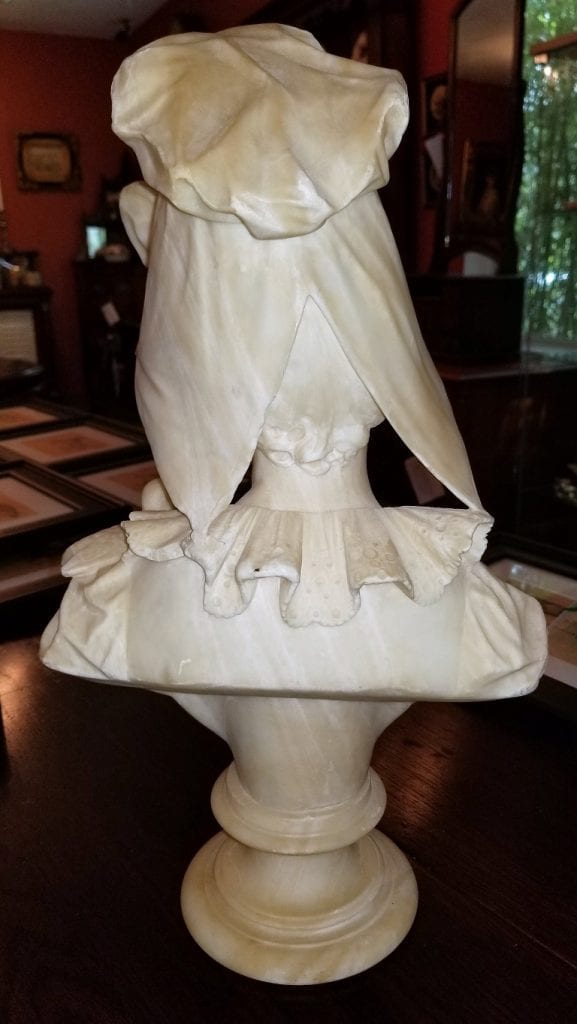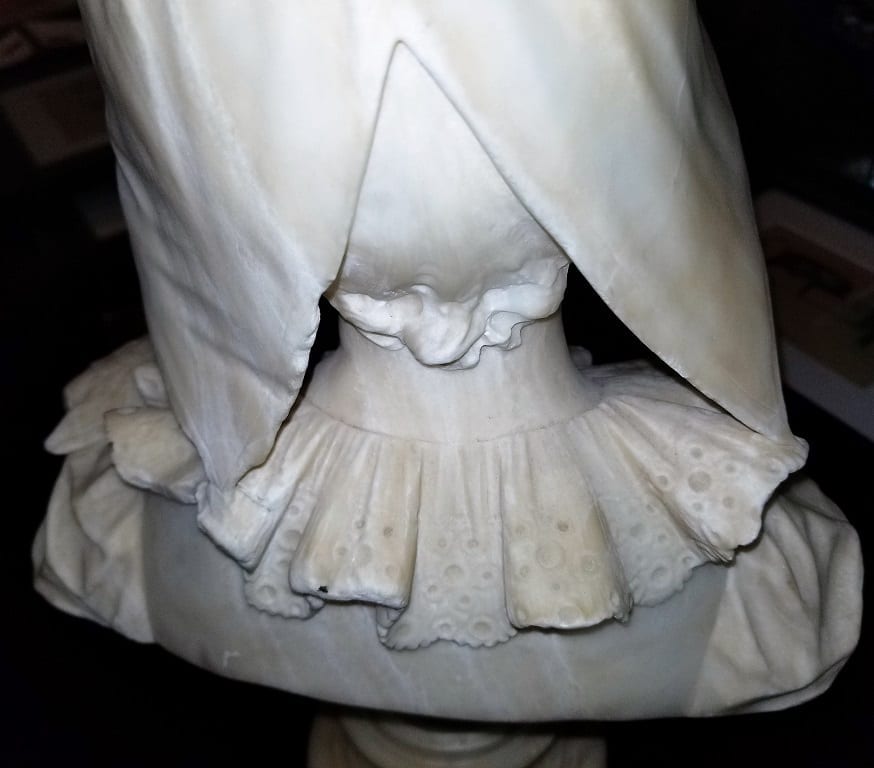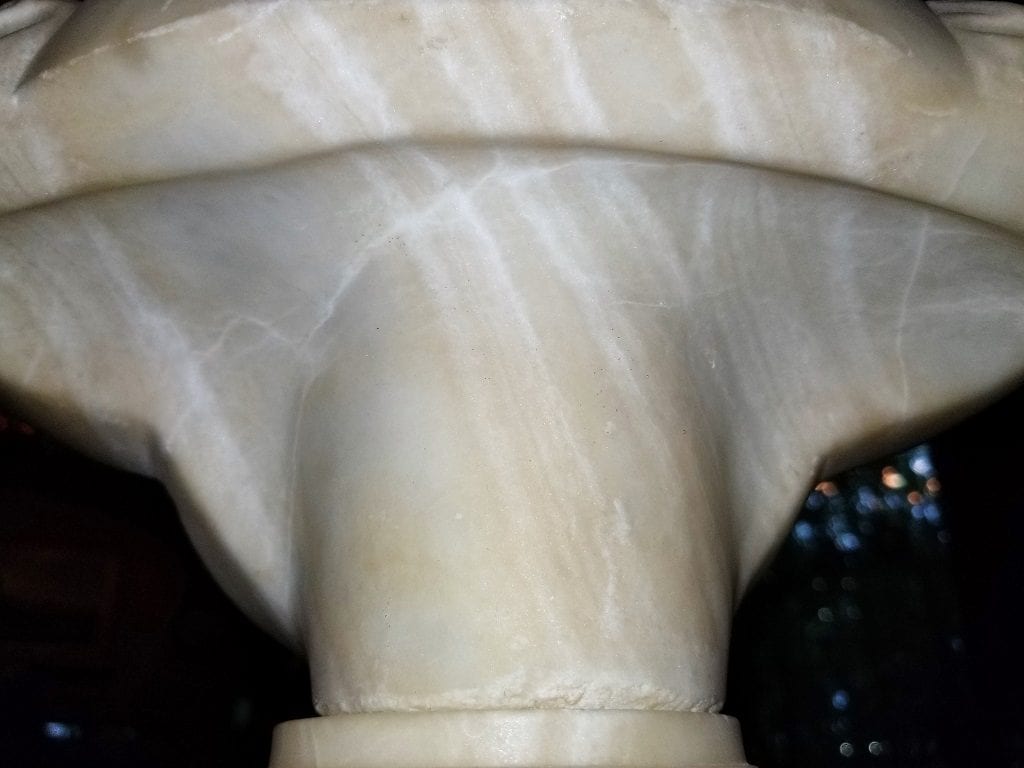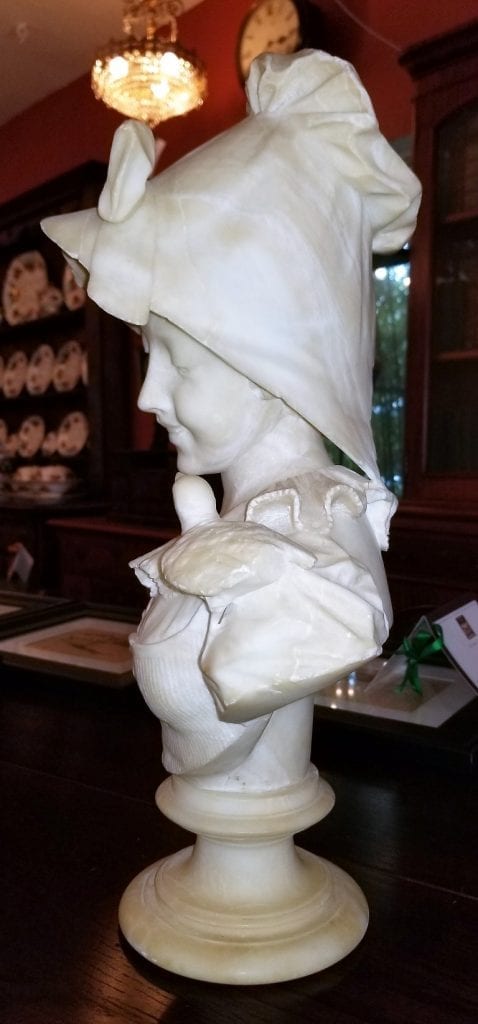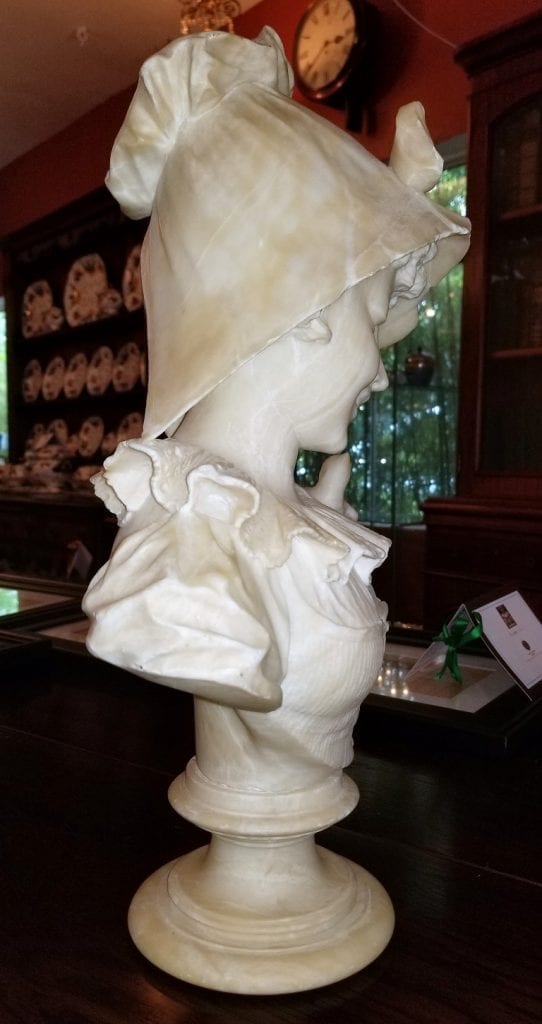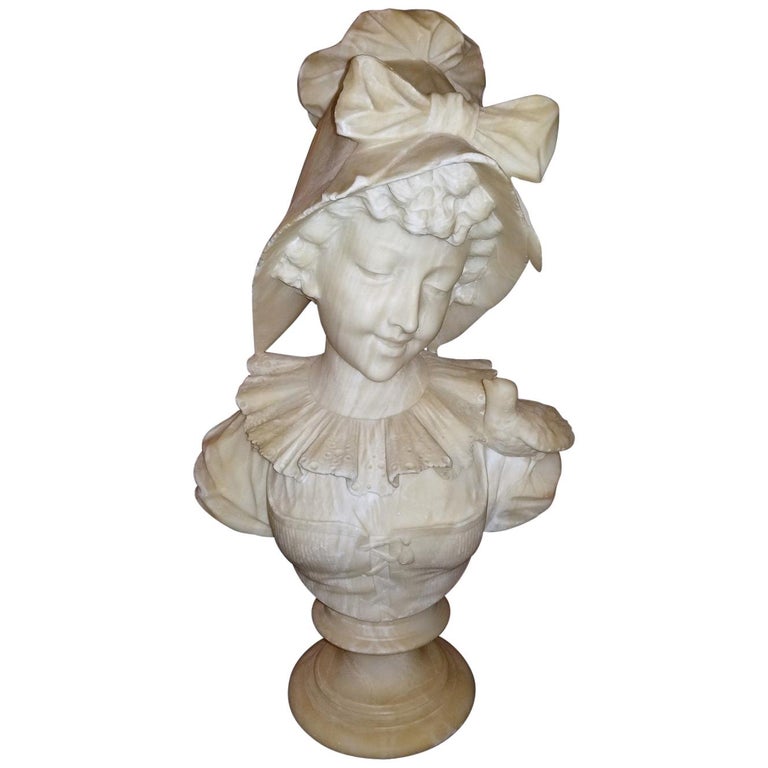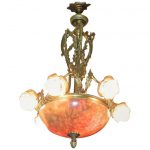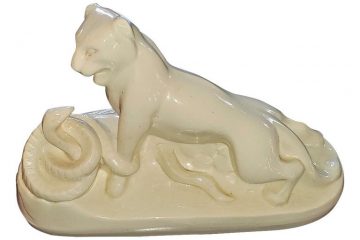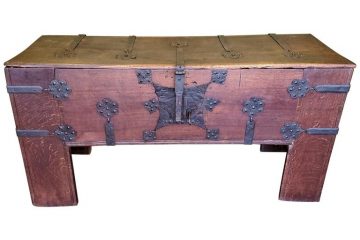19C French White Alabaster Bust of Lady in Bonnet
PRESENTING A BEAUTIFUL 19C French White Alabaster Bust of Lady in Bonnet.
From circa 1880, this bust is gorgeous in it’s detail and subject matter.
Made in probably, France it is a carved white alabaster bust of a beautiful young lady in her bodiced dress and wearing a bonnet secured by a bow to the front. The bonnet opens at the back to reveal her hair and neck.
Her bodiced dress has a frilly lace collar and a little bird rests on her left shoulder.
In 2 pieces:- The bust rests and slots into the turned white alabaster plinth/base.
Of a decent size and makes a REAL STATEMENT in any room!
No makers mark.
Excellent natural patina.
Marble sculpture is the art of creating three-dimensional forms from marble. Sculpture is among the oldest of the arts. Even before painting cave walls, early humans fashioned shapes from stone. From these beginnings, artifacts have evolved to their current complexity. Marble is a metamorphic rock derived from limestone, composed mostly of calcite (a crystalline form of calcium carbonate, CaCO3). The original source of the parent limestone is the seabed deposition of calcium carbonate in the form of microscopic animal skeletons or similar materials. Marble is formed when the limestone is transformed by heat and pressure after being overlain by other materials. The finest marbles for sculpture have no or few stains, though natural stains can be incorporated into the work itself.
Sculptors usually begin by knocking off, or “pitching,” large portions of unwanted stone. A suitable tool for this task is a point chisel, which is a long, hefty piece of steel with a point at one end and a broad striking surface at the other. A pitching tool may also be used at this early stage, which is a wedge-shaped chisel with a broad, flat edge. The pitching tool is useful for splitting the stone and removing large, unwanted chunks.
The sculptor may also use a mallet, which is similar to a hammer with a broad, barrel-shaped head. When the mallet connects to the tool, energy is transferred through the tool, shattering the stone. Most sculptors work rhythmically, turning the tool with each blow so that the stone is removed quickly and evenly. This is the “roughing out” stage of the sculpting process. While a mallet provides the force needed to fracture the marble, it must be used accurately. The smallest miscalculation can ruin the intended sculpture and even injure the sculptor.
Some artists prefer to carve directly onto the stone, without a model; the Renaissance artist Michelangelo, for example, claimed that his job was to free the human form trapped inside the block. Other artists sculpt a preliminary model out of clay or wax and then translate its features to stone through the use of calipers or a pointing machine.
Once the general shape of the statue has been determined, the sculptor uses other tools to refine the figure. A toothed chisel or claw chisel has multiple gouging surfaces which create parallel lines in the stone. These tools are generally used to add texture to the figure. An artist might mark out specific lines by using calipers to measure an area of stone to be addressed and marking the removal area with pencil, charcoal or chalk. The stone carver generally uses a shallower stroke at this point in the process.
Eventually, the sculptor has changed the stone from a rough block into the general shape of the finished statue. Tools called rasps and rifflers are then used to enhance the shape into its final form. A rasp is a flat, steel tool with a coarse surface. The sculptor uses broad, sweeping strokes to remove excess stone as small chips or dust. A riffler is a smaller variation of the rasp, which can be used to create details such as folds of clothing or locks of hair.
Polishing is the last step of the carving process. Sculptors use a variety of fine, abrasive materials such as sandpaper or emery paper to highlight patterns in the stone and to accentuate its natural sheen.[3] Some sculptors may also use tin oxide to achieve a high-lustre polish. Regardless of the method, however, a glossy marble sculpture will appear more translucent than one that has not been polished.
Link: https://en.wikipedia.org/wiki/Marble_sculpture
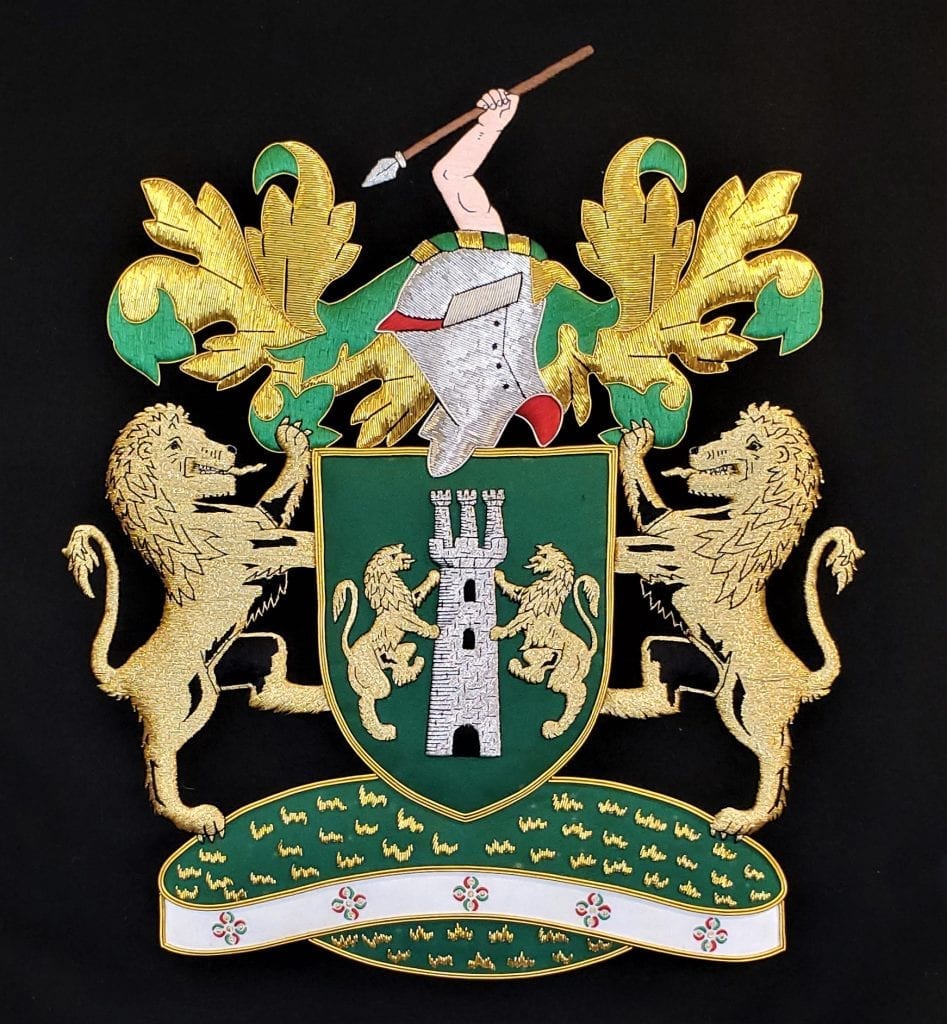

19C French White Marble Bust of Lady in Bonnet
Provenance: From a Private North Texas Collection.
Condition: Very good considering it’s age. Some very minor chips to the bonnet but nothing that detracts from its beauty and value.
Dimensions: 18 inches Tall, 10 inches Wide and 8 inches Deep
PRICE: $3,000 – SALE PRICE NOW: $2,200
